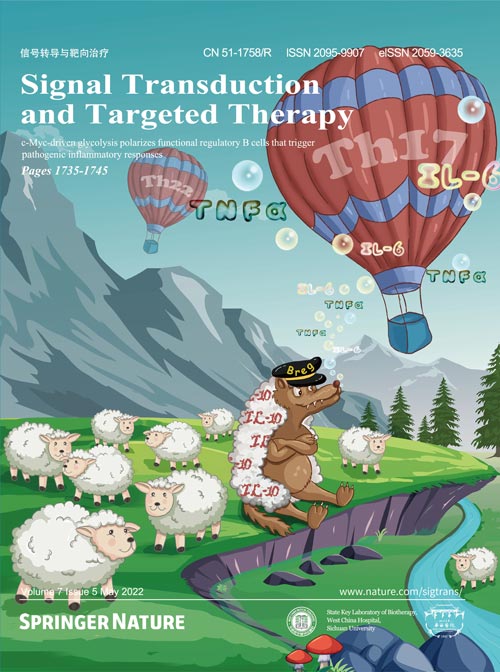Volume 7 Issue 5, May 2022:
Article
c-Myc-driven glycolysis polarizes functional regulatory B cells that trigger pathogenic inflammatory responses
Xu-Yan Wang,Yuan Wei,Bo Hu,Yuan Liao,Xiaodong Wang,Wen-Hua Wan,Chun-Xiang Huang,Mahepali Mahabati,Zheng-Yu Liu,Jing-Rui Qu,Xiao-Dan Chen,Dong-Ping Chen,Dong-Ming Kuang
ORCID: orcid.org/0000-0003-3570-9717,Xue-Hao Wang
ORCID: orcid.org/0000-0001-5849-0098 &…Yun Chen
ORCID: orcid.org/0000-0002-4118-362X
B cells secreting IL-10 functionally are recognized as functional regulatory B (Breg) cells; however, direct evidence concerning the phenotype, regulation, and functional and clinical relevance of IL-10-secreting Breg cells in humans is still lacking. Here, we demonstrate that, although IL-10 itself is anti-inflammatory, IL-10+ functional Breg cells in patients with systemic lupus erythematosus (SLE) display aggressive inflammatory features; these features shift their functions away from inducing CD8+ T cell tolerance and cause them to induce a pathogenic CD4+ T cell response. Functional Breg cells polarized by environmental factors (e.g., CPG-DNA) or directly isolated from patients with SLE mainly exhibit a CD24intCD27−CD38−CD69+/hi phenotype that is different from that of their precursors. Mechanistically, MAPK/ERK/P38-elicited sequential oncogenic c-Myc upregulation and enhanced glycolysis are necessary for the generation and functional maintenance of functional Breg cells. Consistently, strategies that abrogate the activity of ERK, P38, c-Myc, and/or cell glycolysis can efficiently eliminate the pathogenic effects triggered by functional Breg cells.
